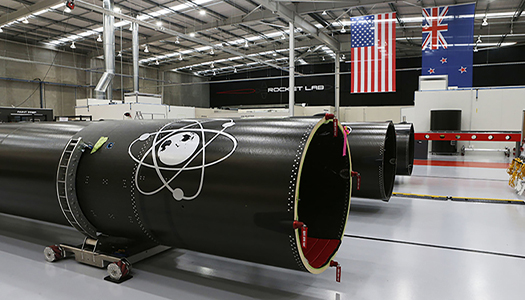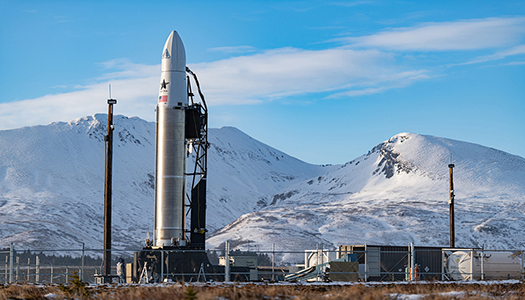LOVE ROCKET DOWNRANGE? SUPPORT THE PROJECT AND STAR ON GITHUB 7
The Launch Library:
Upcoming Launches You Don't Want to Miss
Don't Be Such A Square (STP-S30)
Launch Date:
12/18/2025, 5:03:00 AM
Launch Vehicle:
Electron,
Rocket Lab
Location:
Rocket Lab Launch Complex 2 (Launch Area 0 C),
Wallops Flight Facility, Virginia, USA
Overview:
STP-S30 is a complex mission that will deliver research experiments and technology demonstrations to orbit for the DoD and contribute to future space systems development. The projected primary payload, DISKSat, will demonstrate sustained very low earth orbit (VLEO) flight and test a unique, 1-meter diameter, disk-shaped satellite bus that is design...
Spaceward
Launch Date:
12/19/2025, 6:45:00 PM
Launch Vehicle:
HANBIT-Nano,
Innospace
Location:
HANBIT Pad,
Alcântara Space Center, Federative Republic of Brazil
Overview:
Maiden orbital launch attempt for the South Korean stratup Innospace and its HANBIT-Nano small launch vehicle. Onboard this flight are five small satellites from the Brazilian space agency AEB, Brazilian university Universidade Federal do Maranhão and Indian startup Grahaa Space, as well as three payloads from AEB and Brazilian company Castro Leite...
Unknown Payload
Launch Date:
12/20/2025, 12:30:00 PM
Launch Vehicle:
Long March 5,
China Aerospace Science and Technology Corporation
Location:
101,
Wenchang Space Launch Site, People's Republic of China
Overview:
Details TBD.
NS-37
Launch Date:
12/20/2025, 2:00:00 PM
Launch Vehicle:
New Shepard,
Blue Origin
Location:
West Texas Suborbital Launch Site/ Corn Ranch,
Corn Ranch, Van Horn, TX, USA
Overview:
NS-37 is the 16th crewed flight for the New Shepard program and the 37th in the New Shepard program's history.
Obzor-R No.1
Launch Date:
12/23/2025, 2:00:00 PM
Launch Vehicle:
Soyuz 2.1a,
Russian Federal Space Agency (ROSCOSMOS)
Location:
Unknown Pad,
Plesetsk Cosmodrome, Russian Federation
Overview:
The Russian Obzor-R satellite is a planned X-band radar earth observation satellite designed by TsSKB-Progress.
In 2012, the development of the Arkon-2M radar satellite was stopped and instead the development of the Obzor-R was initiated.
The satellite features the BRLK X-band Synthetic Aperture Radar as the imaging instrument with a ground r...
Don't Be Such A Square (STP-S30)
Launch Date:
12/18/2025, 5:03:00 AM
Launch Vehicle:
Electron,
Rocket Lab
Location:
Rocket Lab Launch Complex 2 (Launch Area 0 C),
Wallops Flight Facility, Virginia, USA
Overview:
STP-S30 is a complex mission that will deliver research experiments and technology demonstrations to orbit for the DoD and contribute to future space systems development. The projected primary payload, DISKSat, will demonstrate sustained very low earth orbit (VLEO) flight and test a unique, 1-meter diameter, disk-shaped satellite bus that is design...
Spaceward
Launch Date:
12/19/2025, 6:45:00 PM
Launch Vehicle:
HANBIT-Nano,
Innospace
Location:
HANBIT Pad,
Alcântara Space Center, Federative Republic of Brazil
Overview:
Maiden orbital launch attempt for the South Korean stratup Innospace and its HANBIT-Nano small launch vehicle. Onboard this flight are five small satellites from the Brazilian space agency AEB, Brazilian university Universidade Federal do Maranhão and Indian startup Grahaa Space, as well as three payloads from AEB and Brazilian company Castro Leite...
Unknown Payload
Launch Date:
12/20/2025, 12:30:00 PM
Launch Vehicle:
Long March 5,
China Aerospace Science and Technology Corporation
Location:
101,
Wenchang Space Launch Site, People's Republic of China
Overview:
Details TBD.
NS-37
Launch Date:
12/20/2025, 2:00:00 PM
Launch Vehicle:
New Shepard,
Blue Origin
Location:
West Texas Suborbital Launch Site/ Corn Ranch,
Corn Ranch, Van Horn, TX, USA
Overview:
NS-37 is the 16th crewed flight for the New Shepard program and the 37th in the New Shepard program's history.
Obzor-R No.1
Launch Date:
12/23/2025, 2:00:00 PM
Launch Vehicle:
Soyuz 2.1a,
Russian Federal Space Agency (ROSCOSMOS)
Location:
Unknown Pad,
Plesetsk Cosmodrome, Russian Federation
Overview:
The Russian Obzor-R satellite is a planned X-band radar earth observation satellite designed by TsSKB-Progress.
In 2012, the development of the Arkon-2M radar satellite was stopped and instead the development of the Obzor-R was initiated.
The satellite features the BRLK X-band Synthetic Aperture Radar as the imaging instrument with a ground r...
API Data brought to you by The Space Devs
Space Industry & Godot (2022):
Help wanted: LunCo Space

Recently, I was invited to join the team at LunCo where we plan to create a space simulation game that features industry real world applications. While similar to games like Kerbal Space and No Man's Sky, LunCo will be feature two game styles - digital twin mode for engineers, and story mode for casual enthusiasts. We also plan to allow user generated content (space crafts, trajectories, factories, etc.) and integration with professional tools like CAD, FEA, MBSE, and more.
For story mode, you are playing as a CEO & Founder of a Lunar exploration company in the near future. You will collect resources, build factories, and manufacture robots to create a sustainable lunar base. From there, it's up to you to turn the Moon into a stepping stone and launch past the stars!
Rocket Lab Special Event (2021):
Rocket Lab ($RKLB) goes public

On Wednesday, August 25th of 2021, Rocket Lab began trading on the Nasdaq, becoming the latest space company to close a merger with a special purpose acquisition company and go public. They closed the first day down slightly at $10.45 per share, under the ticker $RKLB.
“We are super excited to bring a high-quality space asset to the market” Rocket Lab CEO Peter Beck told CNBC. “I don’t think it will take long for investors to differentiate between the company that’s consistently delivering and the ones that have aspirations to deliver sometime in the future” he later added.
Astra Special Event (2021):
Astra ($ASTR) goes public

On Wednesday, June 30th of 2021, Astra became the first launch company to be traded publicly on NASDAQ. Trading under the ticker $ASTR, with shares previously listed under the special purpose acquisition company Holicity, the announcement expects to bring in around $500 million in proceeds. Astra's idea is to use the funding to continue to develop their rockets - with a goal of launching as many of it's 40ft tall rockets as it can, aiming to launch one per day by 2025.
“Now we have a space company that everyone can invest in on the public markets,” Astra CEO Chris Kemp told CNBC. “The same kinds of things you do to make a rocket great are the same behaviors that you have to invest in to make a company great. You don’t want any inefficiencies.”
About Rocket Downrange
Breaking boundaries, setting standards and transforming humanity for the better. Space has always been the final frontier that keeps on giving. This site serves to be a side project that informs and inspires the next generation of explorers.
Rocket Downrange is an independent hobby project by a guy learning Vue. No endorsements or partnerships exist between Rocket Downrange and the included organizations.
Contact Rocket Downrange
If you love the site or think something needs changed - we want to know! Questions, comments, suggestions and more can be sent below. If you know of any free and interesting API's we should include in the site - include information about where to find necessary documentation and we'll get to it!
